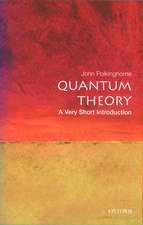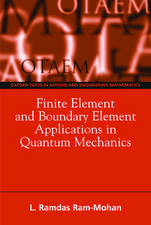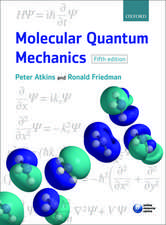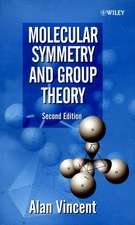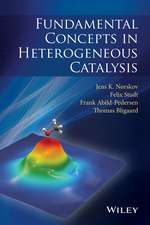Relativistic Electronic Structure Theory: Part 2. Applications: Theoretical and Computational Chemistry, cartea 14
Peter Schwerdtfegeren Limba Engleză Hardback – 4 mar 2004
- Comprehensive publication which focuses on new developments in relativistic quantum electronic structure theory- Many leaders from the field of theoretical chemistry have contributed to the TCC series- Will no doubt become a standard text for scientists in this field.
Preț: 1906.63 lei
Preț vechi: 2611.82 lei
-27% Nou
Puncte Express: 2860
Preț estimativ în valută:
364.95€ • 396.55$ • 306.76£
364.95€ • 396.55$ • 306.76£
Carte tipărită la comandă
Livrare economică 21 aprilie-05 mai
Preluare comenzi: 021 569.72.76
Specificații
ISBN-13: 9780444512994
ISBN-10: 0444512993
Pagini: 804
Dimensiuni: 165 x 240 x 52 mm
Greutate: 1.26 kg
Editura: ELSEVIER SCIENCE
Seria Theoretical and Computational Chemistry
ISBN-10: 0444512993
Pagini: 804
Dimensiuni: 165 x 240 x 52 mm
Greutate: 1.26 kg
Editura: ELSEVIER SCIENCE
Seria Theoretical and Computational Chemistry
Public țintă
All chemistry and physics departments and libraries worldwide. Also all chemical companies, especially those involved in heavy element research.Cuprins
The Chemistry of the Superheavy Elements and Relativistic Effects. Accurate Relativistic Fock-Space Calculations for Many-Electron Atoms. Accurate Relativistic Calculations Including QED Contributions for Few-Electron Systems.Parity-Violation Effects in Molecules. Accurate Determination of Electric Field Gradients for Heavy Atoms and Molecules. Two-Component Relativistic Effective Core PotentialCalculations for Molecules. Relativistic Ab-Initio Model Potential Calculations for Molecules and Embedded Clusters Relativistic Pseudopotential Calculations for Electronic Excited States Relativistic Effects on NMR Chemical Shifts. Relativistic Density Functional Calculations on Small Molecules. Quantum Chemistry with the Douglas-Kroll-Hess Approach to Relativistic Density Functional Theory: Efficient Methods for Molecules and Materials. Relativistic Solid State Calculations.
Recenzii
"Together, these two volumes give both deep and broad coverage of the field of relativistic electronic structure theory." --Russell M. Pitzer. The Ohio State University, Ohio, Ohio, USA, JOURNAL OF THE AMERICAN CHEMICAL SOCIETY, Vol. 126, 2004










